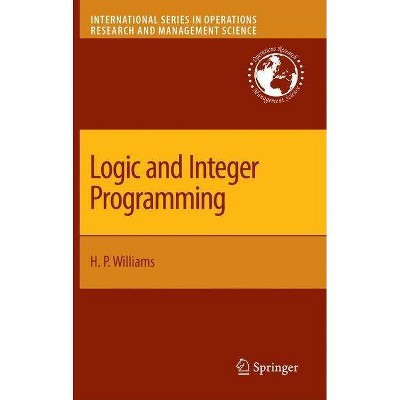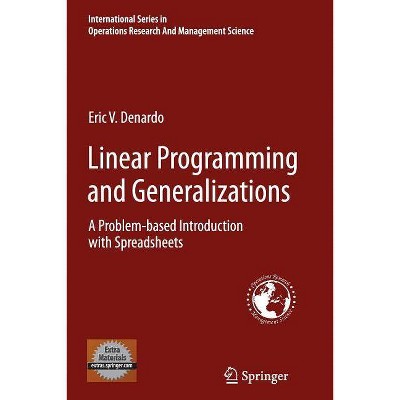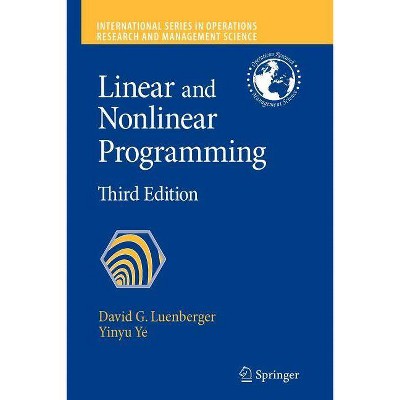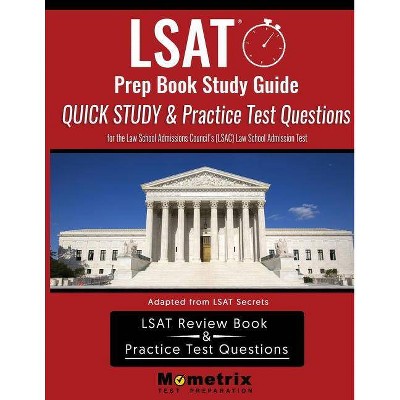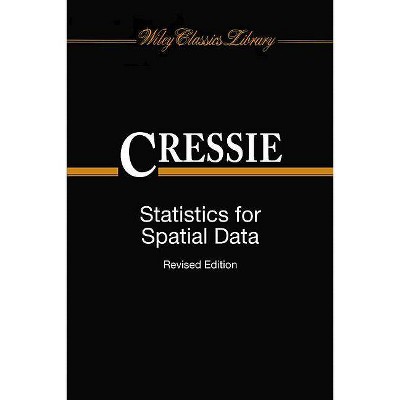Introduction to Stochastic Programming - (Springer Operations Research and Financial Engineering) 2nd Edition by John R Birge & François Louveaux
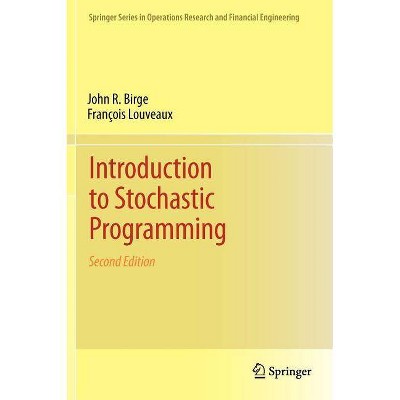
Similar Products
Products of same category from the store
AllProduct info
<p/><br></br><p><b> About the Book </b></p></br></br>In an extensively updated new edition, this book teaches stochastic programming, with new approaches for discrete variables, new results on risk measures in modeling and Monte Carlo sampling methods, a new chapter on relationships to other methods and more.<p/><br></br><p><b> Book Synopsis </b></p></br></br><p>The aim of stochastic programming is to find optimal decisions in problems which involve uncertain data. This field is currently developing rapidly with contributions from many disciplines including operations research, mathematics, and probability. At the same time, it is now being applied in a wide variety of subjects ranging from agriculture to financial planning and from industrial engineering to computer networks. This textbook provides a first course in stochastic programming suitable for students with a basic knowledge of linear programming, elementary analysis, and probability. The authors aim to present a broad overview of the main themes and methods of the subject. Its prime goal is to help students develop an intuition on how to model uncertainty into mathematical problems, what uncertainty changes bring to the decision process, and what techniques help to manage uncertainty in solving the problems. <p/>In this extensively updated new edition there is more material on methods and examples including several new approaches for discrete variables, new results on risk measures in modeling and Monte Carlo sampling methods, a new chapter on relationships to other methods including approximate dynamic programming, robust optimization and online methods.</p><p>The book is highly illustrated with chapter summaries and many examples and exercises. Students, researchers and practitioners in operations research and the optimization area will find it particularly of interest. <p/></p><p>Review of First Edition: </p><p>"The discussion on modeling issues, the large number of examples used to illustrate the material, and the breadth of the coverage make 'Introduction to Stochastic Programming' an ideal textbook for the area." (Interfaces, 1998)</p> <p><p/><br></br><p><b> From the Back Cover </b></p></br></br><p>The aim of stochastic programming is to find optimal decisions in problems which involve uncertain data. This field is currently developing rapidly with contributions from many disciplines including operations research, mathematics, and probability. At the same time, it is now being applied in a wide variety of subjects ranging from agriculture to financial planning and from industrial engineering to computer networks. This textbook provides a first course in stochastic programming suitable for students with a basic knowledge of linear programming, elementary analysis, and probability. The authors aim to present a broad overview of the main themes and methods of the subject. Its prime goal is to help students develop an intuition on how to model uncertainty into mathematical problems, what uncertainty changes bring to the decision process, and what techniques help to manage uncertainty in solving the problems. <p/>In this extensively updated new edition there is more material on methods and examples including several new approaches for discrete variables, new results on risk measures in modeling and Monte Carlo sampling methods, a new chapter on relationships to other methods including approximate dynamic programming, robust optimization and online methods.</p><p>The book is highly illustrated with chapter summaries and many examples and exercises. Students, researchers and practitioners in operations research and the optimization area will find it particularly of interest. <p/></p><p><br>Review of First Edition: </p><p>"The discussion on modeling issues, the large number of examples used to illustrate the material, and the breadth of the coverage make 'Introduction to Stochastic Programming' an ideal textbook for the area." (Interfaces, 1998) </p><p> </p><p> </p> <p><p/><br></br><p><b> Review Quotes </b></p></br></br><br><p>From the reviews of the second edition: </p>"Help the students to understand how to model uncertainty into mathematical optimization problems, what uncertainty brings to the decision process and which techniques help to manage uncertainty in solving the problems. ... certainly attract also the wide spectrum of readers whose main interest lies in possible exploitation of stochastic programming methodology and will help them to find their own way to treat actual problems using stochastic programming methods. As a whole, the three main building blocks of stochastic programming ... are well represented and balanced." (Jitka Dupačová, Zentralblatt MATH, Vol. 1223, 2011)<br><p/><br></br><p><b> About the Author </b></p></br></br>John R. Birge, is a Jerry W. and Carol Lee Levin Professor of Operations Management at the University of Chicago Booth School of Business. François Louveaux is a Professor at the University of Namur(FUNDP) in the Department of Business Administration
Price History
Price Archive shows prices from various stores, lets you see history and find the cheapest. There is no actual sale on the website. For all support, inquiry and suggestion messagescommunication@pricearchive.us







